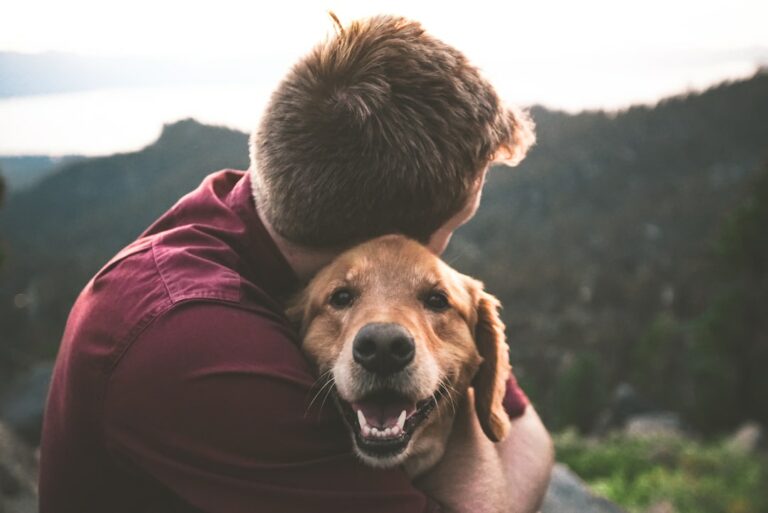Unveiling the Triggers: A Comprehensive Guide to Understanding Dog Aggression
This article explores the common triggers of aggression in dogs and provides insights on understanding, preventing, and managing aggressive behavior with professional guidance and training.
Introduction to Common Triggers of Aggression in Dogs
Aggression in dogs is a multifaceted behavior with roots that can often be puzzling for their human companions. It emerges as a natural canine reaction, shaped by a variety of factors including but not limited to fear, anxiety, territorial instincts, and physical discomfort [2]. The key to preventing and effectively managing such behavior lies in the ability to recognize what triggers these aggressive responses. Each dog is a unique individual, and the way aggression is expressed can greatly differ based on a myriad of elements such as the dog’s inherent temperament, its previous encounters, and even its breed. This diversity necessitates a deep understanding of the underlying causes of aggression, which is crucial for developing a peaceful and respectful coexistence between dogs and their owners.
Moreover, the complexity of canine aggression underscores the importance of early socialization and proper training to mitigate potential triggers. For instance, a dog that has been properly socialized from a young age is less likely to react aggressively to new experiences or unfamiliar faces. In cases where aggression does surface, identifying the specific triggers is paramount in addressing the behavior through targeted interventions. This is where professional services, like those offered by Off Leash K9 Training of Hampton Roads, become invaluable. Their experienced trainers are adept at customizing training programs to suit the needs of each dog, focusing on modifying aggressive behaviors through proven techniques [Customer Product Context]. For those seeking to understand and rectify the triggers of aggression in their furry companions, exploring specialized training programs at https://hamptonroadsdogtrainers.com/ can be the first step towards a solution.
Understanding Fear-Induced Aggression
Fear-induced aggression in dogs is a complex behavior often stemming from previous negative experiences or inadequate socialization during their formative years. This type of aggression manifests as a defensive response when the dog feels threatened or cornered, displaying distinct signs such as cowering, trembling, ears pinned back, and in more severe cases, growling or snapping at the source of their fear. A typical scenario involves a dog that may have been previously mistreated or neglected, leading to an instinctual reaction to defend itself from perceived threats, including humans approaching too quickly or unfamiliar environments.
Addressing fear-induced aggression requires a patient and systematic approach, focusing on building the dog’s confidence and trust. Gradual desensitization to the stimuli that trigger fear, combined with positive reinforcement strategies, can significantly improve a dog’s response to fearful situations. For instance, a dog scared of strangers can be slowly introduced to new people in a controlled and comforting setting, rewarding calm behavior with treats or praise. This process, however, can be challenging and lengthy, necessitating the involvement of a professional dog trainer or behaviorist. Off Leash K9 Training of Hampton Roads specializes in such cases, offering tailored training programs that address the unique needs of dogs with fear-induced aggression, guiding them towards becoming more confident and less reactive [Customer Product Context]. For those struggling to manage a dog’s fear aggression, seeking professional help can be a transformative step towards a happier, more relaxed pet. Explore how Off Leash K9 Training can assist by visiting https://hamptonroadsdogtrainers.com/ for further details.
Territorial Aggression and Its Implications
Territorial aggression in dogs is a complex behavior rooted in their instinct to protect their perceived territory from intruders. This type of aggression can manifest in various ways, from barking and growling to more overt actions like lunging or biting. Such behavior often targets strangers or unfamiliar animals that the dog views as a threat to its home or yard. A common scenario illustrating this aggression is a dog aggressively reacting to a mail carrier or visitor approaching the house, which can be distressing for both the dog and the owner, as well as the unsuspecting visitor [3]. To address and effectively manage territorial aggression, a multifaceted approach is necessary. Implementing structured training sessions that focus on obedience and calm behavior in the presence of guests can significantly reduce incidents of aggression. Positive reinforcement techniques, such as treats and praise for non-aggressive behavior when outsiders are nearby, play a pivotal role in teaching dogs appropriate responses to perceived threats. Additionally, establishing clear boundaries within the home and yard helps in reinforcing the dog’s understanding of safe, non-threatening environments. Off Leash K9 Training of Hampton Roads specializes in these training techniques, offering customized programs that cater to reducing territorial aggression among other behavioral issues. Their experienced trainers work closely with dogs and their owners to establish a peaceful coexistence with visitors and passersby, ensuring safety and harmony within the home.
For dog owners struggling with territorial aggression, seeking professional assistance can be a game-changer. Visit https://hamptonroadsdogtrainers.com/ to explore how Off Leash K9 Training of Hampton Roads can assist in transforming your dog’s behavior through proven, effective training methods.
Resource Guarding Behavior in Dogs
Resource guarding in dogs is a complex behavior rooted in their instinct to protect valuable resources such as food, toys, or a preferred sleeping area. This behavior is not uncommon and stems from a dog’s natural survival instincts; however, it can become problematic when the dog perceives family members or other pets as threats to their possessions. The guarding can range from mild, such as growling or barring the way, to severe, including snapping or biting when someone approaches them during mealtime or while they are engaged with their favorite toy. Understanding and addressing resource guarding require patience and a consistent training approach.
Behavior modification techniques offer a pathway to managing and reducing resource guarding behaviors effectively. One commonly used method is the “trade-up” game, where the dog is taught to relinquish the guarded object in exchange for something of higher value, such as a tasty treat or a more preferred toy. Another strategy involves gradually desensitizing the dog to the presence of people or other animals near their valued items, reinforcing positive associations through rewards and praise. These techniques, when applied consistently, can help mitigate resource guarding tendencies, ensuring a safer and more harmonious household. For families facing persistent challenges with resource guarding, seeking the assistance of professional trainers, like those at Off Leash K9 Training of Hampton Roads, can provide customized solutions tailored to the unique needs of their dog. With expertise in handling a wide range of behavioral issues, Off Leash K9 Training employs proven methods to address and modify resource guarding behaviors, helping dogs learn to trust and share their space and possessions peacefully. Explore their training programs further at https://hamptonroadsdogtrainers.com/ for expert guidance and support.
Pain-Induced Aggression and Its Triggers
When dogs experience pain, their behavior can dramatically change, often manifesting as aggression. This defensive mechanism serves to protect them from further harm or discomfort, signaling to others that they are in distress. Various health issues can trigger this type of aggression, ranging from chronic conditions like arthritis, which causes joint pain and stiffness, to acute problems such as dental issues or injuries from accidents. For example, a dog with an underlying dental problem might suddenly snap or growl when its face is gently touched, a behavior that might seem uncharacteristic to the owner but is a direct response to the pain.
Understanding that aggression can be a symptom of pain is crucial for dog owners. It requires a compassionate and informed approach to identify the signs of discomfort in their pets. Signs of pain in dogs can be subtle, such as decreased activity, reluctance to jump or climb stairs, or more overt like whimpering, limping, or aggression when a painful area is approached. Early recognition of these signs and seeking prompt veterinary care are essential steps in addressing the root cause of the pain and, consequently, the aggression. Moreover, recognizing pain-induced aggression allows owners to handle their dogs more carefully, avoiding further discomfort, and potentially dangerous situations. Implementing strategies for pain management, as advised by a veterinarian, can significantly improve the quality of life for a dog experiencing chronic conditions. At Off Leash K9 Training of Hampton Roads, professionals understand the complexities behind pain-induced aggression and can offer guidance and support to owners, helping them navigate their dog’s pain management and behavioral modification, ensuring a safer environment for both pets and their families. Discover more about managing canine aggression effectively by visiting https://hamptonroadsdogtrainers.com/.
Frustration and Barrier-Related Aggression
Frustration and barrier-related aggression in dogs manifest when their desires to interact or reach something are thwarted, often resulting in aggressive behaviors such as barking, lunging, or snapping. This form of aggression can stem from a wide range of scenarios, such as a dog seeing another animal outside its window but being unable to chase it, or being restrained by a leash when it wants to greet another dog or person enthusiastically. These situations can lead to heightened levels of stress and frustration in dogs, causing them to act out aggressively as a means to communicate their displeasure or desperation.
To effectively manage and mitigate frustration and barrier-related aggression, a comprehensive approach that includes training focused on improving impulse control and teaching dogs alternative, more acceptable ways to express their frustration is essential. For instance, redirecting a dog’s attention to a toy or a treat can help alleviate immediate stress and prevent aggressive responses. Additionally, providing dogs with regular exercise and mental stimulation can significantly reduce their overall frustration levels by fulfilling their need for physical activity and engagement. Techniques such as desensitization, which gradually acclimates the dog to the source of frustration in a controlled manner, can also be highly effective. Off Leash K9 Training of Hampton Roads specializes in such training programs, offering customized solutions that address the unique needs of each dog, thereby helping to prevent aggression before it starts. For more guidance on managing frustration and barrier-related aggression in dogs, explore the specialized training programs available at https://hamptonroadsdogtrainers.com/ [4].
Social Aggression and Pack Dynamics
Social aggression and pack dynamics in dogs revolve around the intricate social hierarchies that exist within canine groups. This form of aggression is primarily observed when there’s an ambiguity in the pack’s pecking order or during encounters with unfamiliar dogs or humans, which can lead to competitive or aggressive behaviors. Dogs, much like their wild ancestors, rely on a clear social structure to coexist peacefully. When these structures are challenged or not well established, it can result in social aggression as dogs attempt to navigate their social environment. This is particularly evident in situations where dogs feel their position in the pack is threatened or when they’re introduced to new, potentially stressful surroundings without proper acclimation [3].
Mitigating social aggression involves a deep understanding of dog behavior and social cues. Early and consistent socialization plays a pivotal role in preventing social aggression by exposing dogs to a variety of situations, animals, and people, thus helping them learn appropriate responses and behaviors. Training that focuses on positive reinforcement, along with strategies aimed at integrating dogs properly into their social groups, can significantly reduce the likelihood of social aggression. For instance, controlled exposure to new environments and animals under the guidance of a professional trainer can teach dogs how to interact without resorting to aggression. For dog owners facing challenges with social aggression, seeking the assistance of experienced trainers, such as those at Off Leash K9 Training of Hampton Roads, can offer tailored solutions that address the root causes of aggression, ensuring a well-adjusted and socially adept canine companion. Discover more about how to transform your dog’s behavior at https://hamptonroadsdogtrainers.com/ [2].
Signs of Aggression to Watch Out For
Identifying the early indicators of aggression in your dog is a pivotal step in preventing a minor issue from developing into a more serious problem. Signs of aggression are not always overt and can range from subtle body language cues to more explicit actions. For instance, a dog might exhibit raised hackles, which is the hair along the dog’s spine standing up, as a sign of being on alert or feeling threatened. Direct eye contact from a dog, especially when coupled with a stiff, immovable posture, can signal a challenge or a readiness to confront a perceived threat. Moreover, vocalizations such as growling or snapping are clear warnings that a dog is in a state of discomfort or fear and may resort to aggression if pushed further [4].
In addition to these behaviors, it’s important to recognize when a dog attempts to make itself appear larger by spreading its stance and showing its teeth. This is often a dog’s attempt to intimidate and ward off perceived threats without resorting to physical confrontation. However, these signs should not be ignored. When such behaviors are noticed, it’s imperative to act swiftly by seeking assistance from professionals who specialize in canine behavior. This is where services like Off Leash K9 Training of Hampton Roads come into play, offering expert guidance and training to address and manage aggression effectively. Their experienced trainers can help identify the root causes of your dog’s aggression and develop a tailored plan to modify the behavior. Ignoring these signs or delaying the search for professional help can lead to the aggression becoming more unpredictable and harder to manage, posing a risk to both the dog and those around it. For those seeking assistance, exploring the specialized training programs at https://hamptonroadsdogtrainers.com/ is a proactive step toward ensuring the safety and well-being of your pet.
Preventing and Managing Aggressive Behavior Effectively
Preventing and managing aggressive behavior in dogs involves a multifaceted approach that starts from the very beginning of a dog’s life. Early socialization is key, exposing puppies to a variety of people, animals, environments, and situations can help them become more adaptable and less fearful as they grow. This exposure should be paired with positive reinforcement training, which rewards good behavior, helping the dog associate new experiences with positive outcomes. Consistency in training and setting clear rules and boundaries not only helps in establishing a sense of security and structure for dogs but also aids in preventing misunderstandings that could lead to aggressive responses.
When aggression becomes apparent, it’s critical not to delay seeking professional help. Behaviorists and trainers, like those at Off Leash K9 Training of Hampton Roads, can assess the situation and develop a behavior modification plan tailored to the specific triggers and needs of your dog. This personalized approach may include techniques such as desensitization, counterconditioning, and management strategies to reduce instances of aggression. Furthermore, these experts can guide owners on how to safely interact with their dogs, reinforcing positive behaviors and reducing the risk of escalation. For those facing challenges with aggression in their canine companions, exploring specialized training programs offered at https://hamptonroadsdogtrainers.com/ can be a transformative step towards a harmonious relationship.
How Off Leash K9 Training of Hampton Roads Can Assist
Off Leash K9 Training of Hampton Roads stands out as a beacon of hope for pet owners grappling with the complexities of canine aggression. With a deep understanding of the multifaceted nature of aggression in dogs, ranging from fear-induced to territorial behaviors, their team of seasoned trainers crafts individualized programs that target the specific triggers underlying each dog’s aggression. Utilizing state-of-the-art training methodologies, they not only aim to mitigate aggressive behaviors but also strive to bolster the overall obedience and happiness of your canine companion. This holistic approach ensures a comprehensive resolution to behavioral challenges, fostering a safer and more harmonious environment for both dogs and their families [Customer Product Context].
Moreover, the expertise of Off Leash K9 Training does not stop at addressing aggression. Recognizing that prevention is just as crucial as intervention, they offer guidance on early socialization techniques and positive reinforcement strategies that can significantly diminish the likelihood of aggression developing in the first place. Their commitment to fostering well-behaved, confident dogs extends beyond the training field, with the team readily available to provide ongoing support and advice to ensure the long-term success of their training programs. For those seeking to transform their dog’s behavior and unlock the full potential of a joyful, obedient pet, exploring the specialized training programs at https://hamptonroadsdogtrainers.com/ offers a promising path forward [Customer Product Context].
Conclusion on Addressing Dog Aggression
Understanding the root causes of aggression in dogs is not just about managing an unwanted behavior; it’s about ensuring the safety and happiness of both the dog and its human companions. Aggression can stem from fear, territorial instincts, pain, or even frustration, and identifying these triggers is the first step towards a solution. By seeking professional guidance, dog owners can access customized training programs that address the unique needs of their pets, taking into account factors such as the dog’s history, environment, and specific triggers of aggression. This tailored approach allows for more effective behavior modification and management, leading to a significant improvement in the dog’s behavior and overall well-being.
For those who recognize the need for professional intervention, Off Leash K9 Training of Hampton Roads offers a range of specialized training programs designed to address various forms of aggression. With experienced trainers who utilize proven techniques, they can help transform challenging behaviors into positive outcomes [Customer Product Context]. Whether your dog is displaying signs of territorial aggression, resource guarding, or fear-based reactions, there is a program that can help. By investing in the right training and support, you can create a more harmonious and safe environment for your pet and your family. To learn more about how these programs can benefit your dog, visit https://hamptonroadsdogtrainers.com/ for further details.














